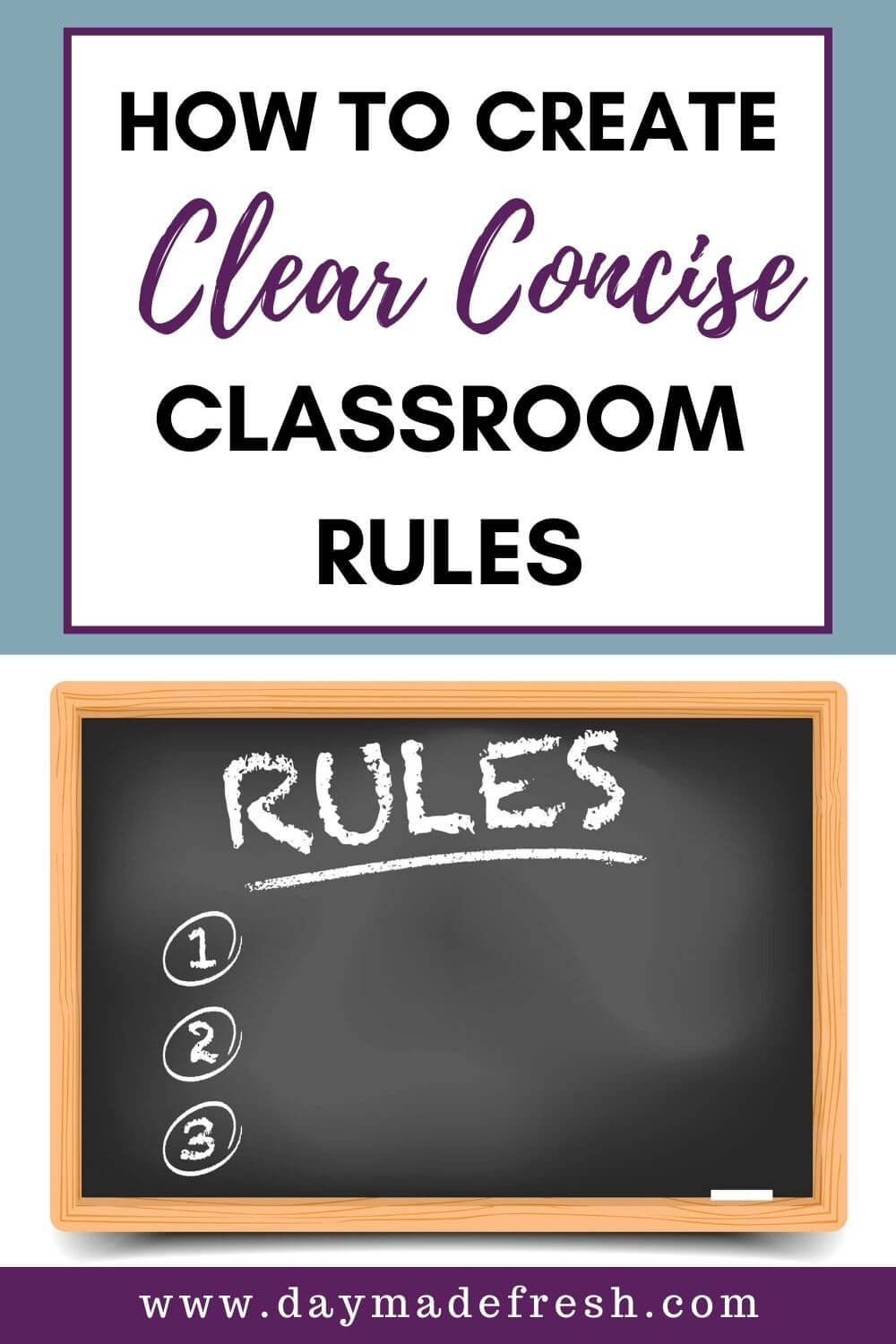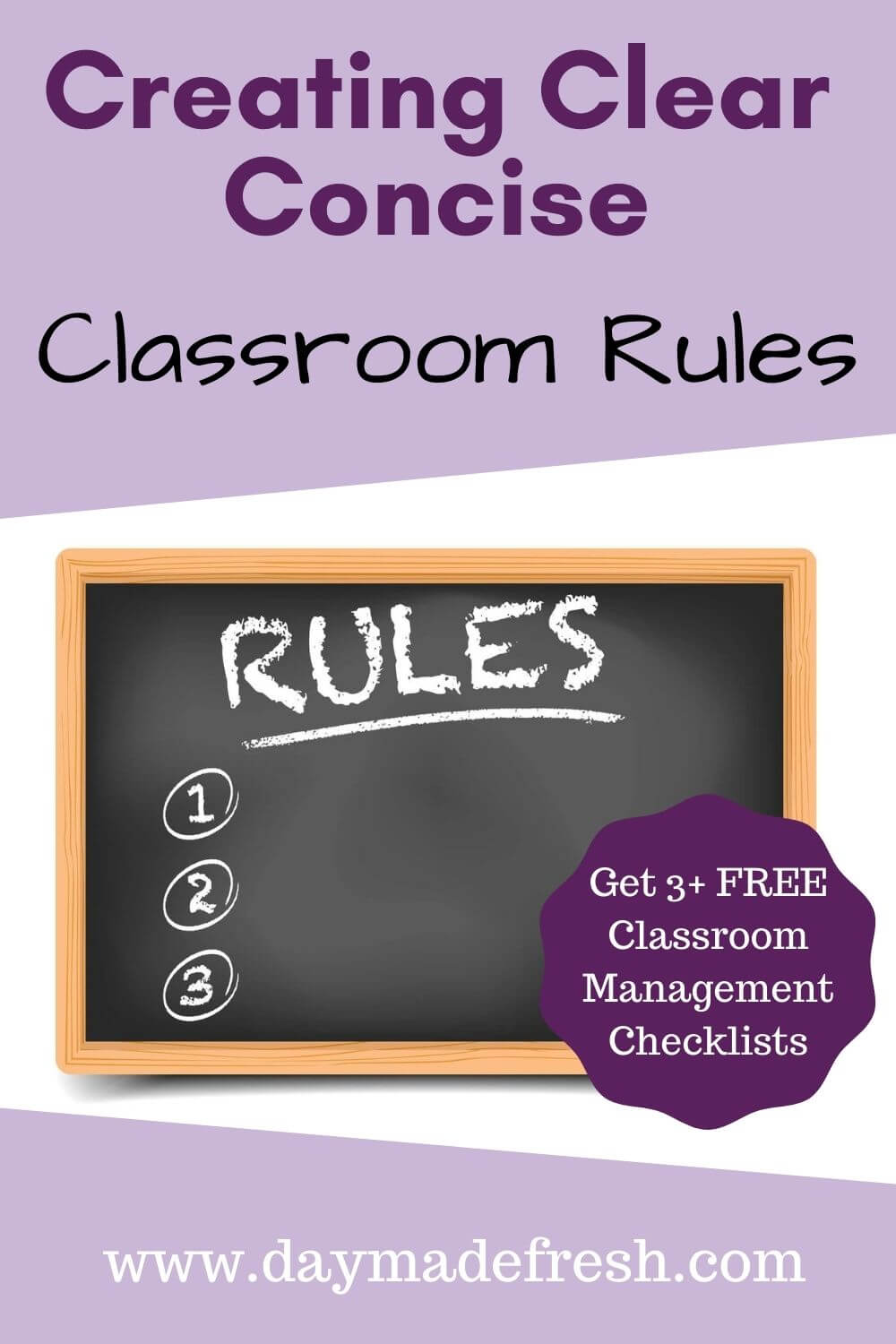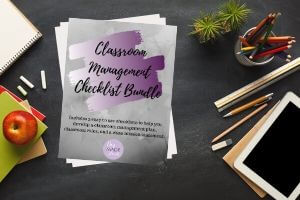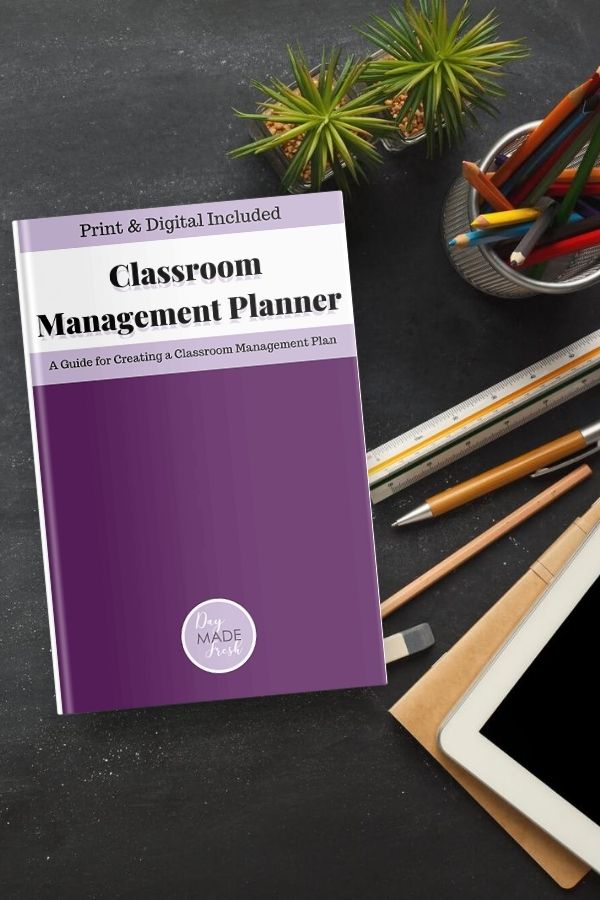I started out my teaching career as a substitute teacher. As I’m sure those of you that have done the same can attest there were classes that I loved subbing in and others that I vowed to never accept a job in again. I found that the classes, I enjoyed being in, all had a few things in common and one of them was that there was a strong classroom culture.
One key part of each classroom’s culture was that there was a clear understanding of how students were expected to behave. This can be accomplished by creating a strong classroom management plan and one step in developing that plan is to create a set of classroom rules.
This post contains some affiliate links for your convenience. Click here to read my full disclosure policy.
Creating Clear Concise Classroom Rules is Essential to a Strong Classroom Management Plan

Creating a set of classroom rules will not take you a long time, but the outcome of your time spent will help ensure that your classroom runs smoothly, because your students will know and understand your expectations. Rules that are clear and concise also help ensure all students can succeed.
I highly recommend developing your classroom rules before the school year starts, but if you don’t currently have any and you’d like to implement them during the school year it is possible. I’ve adopted rules in the middle of the year and I’ve found it works as long as I present it to my students that we are adding or changing things so that our classroom can become better. They can’t argue with that. 🙂
Step 1 Research and Brainstorm Classroom Rules
There are a lot of examples and resources out there when it comes to classroom rules. There are even pre-printed classroom rules posters that you can purchase, but it is my belief that your class rules will be more effective if you’ve crafted them yourself. However, if a set of classroom rules doesn’t come to mind or you’d like to try a new set of classroom rules it can be beneficial to do some research.
Ready to start creating your classroom rules? Get a set of Classroom Management Checklists to help guide you through the steps!
When researching classroom rules I’d highly recommend checking out some of these great books about classroom management:
- Tough Kid Book by Pacific Northwest Publishing
- Teaching Children to Care by Ruth Sidney Charney
- CHAMPS: A Proactive and Positive Approach to Classroom Management by Randall Sprick
- Whole Brain Teaching for Challenging Kids: (and the rest of your class, too!) by Chris Biffle
- Teach Like a Champion by Doug Lemov
- The First Days of School: How to Be an Effective Teacher by Harry K. Wong Publications
- The Tough Kid New Teacher Book by Pacific Northwest Publishing
Now, please don’t think I’m suggesting you read all of these books before creating your classroom rules, but they are a great resource. Each has helped me refine and improve my classroom rules over my seven-plus years of teaching and I know that they can help you as well.
As you do your research, start a running list of rules that you like, even if some of the rules are the same because you can refine them later. Other great sources, to find examples of classroom rules, are on Pinterest and other teacher’s classrooms. This helped me brainstorm different wordings of rules so I could find what fit me best. (Check out my classroom management Pinterest board for ideas!) At this point do not limit yourself just jot down anything that sounds good to you.
Step 2 Narrow Down Your Classroom Rules
To make your classroom rules truly effective you need to limit how many rules you have. It is my rule of thumb to narrow down my list to three to five rules. This makes it easier for students to remember and doesn’t overwhelm them. As you narrow down your list remember these three things:
- Keep to three to five rules.
- Make the rules concrete and easy to understand.
- Write the rules in a positive way.
What I mean by “make the rules concrete and easy to understand” is that while “Be Responsible” is a great expectation to have for students it isn’t concrete. Do your students know what it means to be responsible? Can your students easily quantify what is or is not “being responsible”? I’m sure you have a picture in your mind of what a responsible student looks like and acts like, but too often our students do not. I still have this as an expectation for my students and teach them about being responsible, but it is no longer one of my rules.
Making your rules concrete is especially important for challenging students. They need to have clear boundaries that are black and white to limit arguing and miss understandings. I do push this a little bit by having my last rule as “Make Smart Choices” I think this works because the rest of my rules are concrete. I do this as it covers so many situations and I can easily say to students that get in trouble, “Well did you make a smart choice? Why or Why not?”
It is also important to word your rules in a positive way. This helps students see them in a more positive light and helps them focus on what they should be doing, instead of what they should not be doing. It also helps when you’re correct a student because you can say, “In this classroom, we listen when someone is talking” versus “No talking.”
Once you have your narrowed down list take a moment to evaluate it. Think about possible behavior problems, does your list of classroom rules cover those issues? Are they easy to understand for your students? Are they all written in a positive way? If you can’t answer “yes” keep tweaking your list. Otherwise, congrats you have a set of Classroom Rules!
Step 3 Plan How to Share Your Classroom Rules
Wouldn’t it be great if you could take your newly created list of classroom rules, post them, and your students read them and follow them? Yep…it would be awesome, but as we all know this is not how it works.
If you want your students to know, understand, and follow your class rules you need to plan how you will share your rules with your students and their families. While you will do the majority of this at the beginning of the year there will be other key times in the school year that you should plan to go over your rules and other parts of your classroom management plan. Such as after long breaks, before you have a substitute teacher, and when the class is struggling.
The first way I share my classroom rules is to post them on a large poster in an easy to see location so that they can be easily referenced. I also make smaller posters to reference on document cameras, for small group areas, etc. I also include my class rules on a document I send home to families that gives a brief description of my classroom management plan as a whole. Read this post about creating a great classroom management plan to go with your classroom rules. Displaying your classroom rules is a great time to get creative. I’ve seen teachers create beautiful posters, memes, or cartoons. Find what works for you and fits your classroom culture. I use a poster like below:
During the first weeks of school, I spend a large amount of time going over my classroom management plan including the rules. I would suggest teaching your students your rules on the first day of school and reviewing them each day for three to five days. I use hand motions to help my students learn the rules which I learned from Whole Brain Teaching ( Whole Brain Teaching for Challenging Kids: (and the rest of your class, too!)). With first graders, I had them create a small book of the rules by filling in the rules and drawing a picture to represent the rule. With third graders, I’m going to have them create their own small posters to keep in their binders. I also lead discussions about what the rules mean, why we have them, etc. Another great way to help students learn the rules is to have them demonstrate what following the rule looks like versus what it doesn’t look like.
I believe it is also important to refer to the rules throughout the year, not just at the beginning of the year. One way I do this is by including the rules on my ClassDojo points or other behavior management system. I also use the wording of the rules when discussing behaviors with students and on behavior reflection sheets. If the class as a whole seems to be struggling with a specific rule we may have a class meeting to help brainstorm ideas on how we can better follow the rule. All of this makes them living rules versus just a poster on the wall.
Most administrators encourage their teachers to spend the time at the beginning of the year going over classroom rules and procedures. However, if you ever get pushback for taking instructional time to cover these topics point out that spending the time now will allow you to use your instructional time more effectively the rest of the year because you won’t have to take as much time to deal with behaviors. You can also get creative, I’ve used social studies time to go over rules and called it civics. No matter what, you know your class best and know what they need.
Step 4 Evaluate Your Classroom Rules
I suggest that each school year you take a moment to evaluate your classroom rules. Reevaluating what you’re using in your classroom is so important to continuously work towards making things better for yourself and your students. This practice takes the pressure off of needing your rules to be perfect right here and now; instead, look at the rules you’ve created as part of a case study.
As you go through the school year check in and assess what is working and what could be better. Then you can adapt your rules to better fit your classroom needs. I normally only change my rules at the start of a new school year, but if you are noticing that something is causing major issues in your classroom in the middle of the year I believe that you can successfully change things up to make things better.
Ready to start creating your classroom rules? Get a set of Classroom Management Checklists to help guide you through the steps!
While it is important to evaluate your classroom rules to make sure they are still meeting your needs do not feel like you need to change the rules every year. If they’re working stick with them. “If it’s not broke, don’t fix it!” You have enough on your plate already.
Clear concise classroom rules are an important part of the foundation of any classroom management plan. Go through the process of brainstorming & researching, narrowing your list down, and developing a plan to share your classroom rules. Then take the time each year to evaluate your classroom rules. Once you have your classroom rules I encourage you to continue to develop or reevaluate your classroom management plan in its entirety, so you can create the classroom culture you want.
I’d love for you to share the classroom rules you create and your process. What rules have made a big difference in your classroom? What rules did you think were awesome, but ultimately didn’t work? If you have any questions or if you’d like help creating your clear concise classroom rules please contact me.





